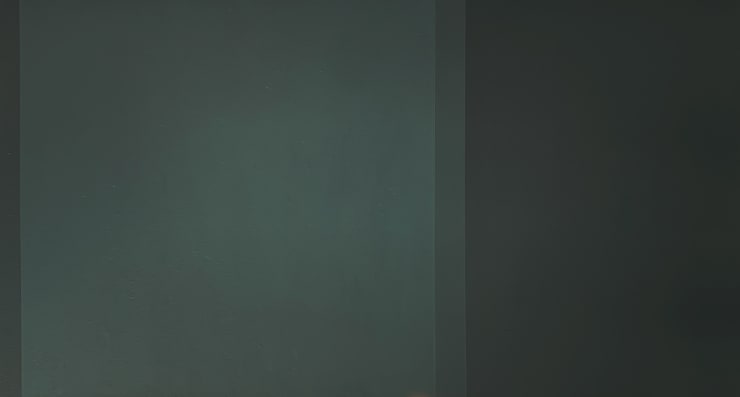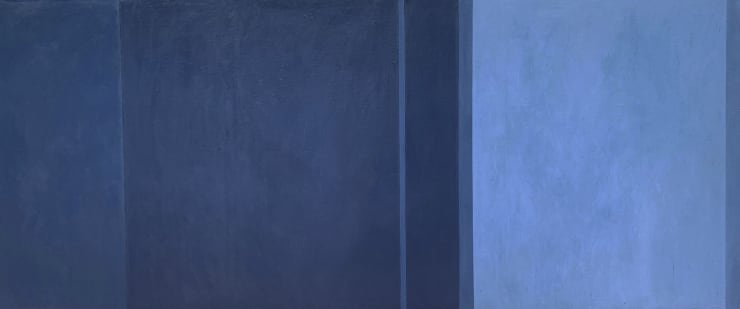JOHN GASPER : Monochromes: A Twenty Year Overview
“I’ve been painting for more than 40 years. Most people think I paint like Rothko because of the intimate nature of the way I apply paint to the surface. I consider my subject matter to be mythic. One might say that they’re cave paintings or shadows that are stories.”
John Gaspar is a world-renowned artist who has been painting for more than 40 years. He has had solo exhibitions in New York, Los Angeles, Washington DC, Dusseldorf, Osaka and has exhibited in many other domestic and international group shows. In 1977 he earned his BFA in Painting from The State University of New York College in Buffalo and in 1980 earned his MFA in Painting from Yale University School of Art. Regarding his painterly style Gaspar has stated: “I’ve been painting for more than 40 years. Most people think I paint like Rothko because of the intimate nature of the way I apply paint to the surface. I consider my subject matter to be mythic. One might say that they’re cave paintings or shadows that are stories.” It is telling that Gaspar references Rothko in comparison to his own work because of the way they both seem to view painting as a philosophical enterprise with an ability to communicate spiritual truths. Just as Rothko saw art to be a fusion of rational order and irrational impulses, Gaspar’s paintings philosophically examine mythical influences over the rational mind and natural world. Geometric patterns, color blocks and grids are often distorted with protruding blocks of color and sometimes distorted, morphing lines. The artist Brice Marden was known to visit Gaspar’s studio and a visual dialogue between the two artists’ bodies of work began to emerge. Artists Elizabeth Murray and Robert Pincus were also known to frequent Gaspar’s studio and take influence from his work. Gaspar’s work continues to influence a number of prominent artists and he remains a key figure in the New York Arts Community.
Many of Gaspar’s works, such as Unfolding, 1993 are seemingly monochromatic and evoke the stoicism of Rothko’s monochromatic compositions, such as those within the Rothko Chapel. However, upon further scrutiny it becomes clear that Gaspar gradually adjusts tones and hues within the composition to suggest a transformative, morphing composition that offers movement via color, light and space. This coincides with Gaspar’s own descriptions of his work as “mythic.”
In other Gaspar works, such as Untitled, 1994 there is an abundance of contrasting blocks of color that coincide next to one another like columns, which replace traditional narrative content, much like Rothko’s bars of color. Unlike Rothko, Gaspar does not float his blocks of color, the “halo” effect, but instead shows the geometric vertical blocks uncontained to suggest an unrestricted expanse of color into realms beyond the canvas edge. Gaspar also mirrors Rothko in retaining the painterly quality of his work with subtle brushwork that varies in texture and dilution.
In other works, such as Untitled, 1993, Gaspar completely breaks from the regimented columns of color blocks and instead offers a much more gestural intrusion of one color polluting another within the composition. This more chaotic coexistence of colors also recall Rothko in works such as No. 13 from 1949 where his block of color morph into less stable geometric forms and cloud the composition with their ambiguity. Perhaps are more profound influence in this case would be the work of Clyfford Still. Still referred to his jagged lines that sliced through his compositions and austere colors, as “Life Lines.” These lines were “mythical” in a sense for Still as they represented the polarities of the elemental and the agitated. Gaspar uses a similar dichotomy of balance and instability within his compositions to offer his own perspectives on the philosophy of aesthetics.
-
 John Gaspar, Untitled
John Gaspar, Untitled -
 John Gaspar, Thread of Existence Left, 1995
John Gaspar, Thread of Existence Left, 1995 -
 John Gaspar, Untitled
John Gaspar, Untitled -
 John Gaspar, Untitled
John Gaspar, Untitled -
 John Gaspar, Untitled
John Gaspar, Untitled -
 John Gaspar, Untitled
John Gaspar, Untitled -
 John Gaspar, Untitled, 1995
John Gaspar, Untitled, 1995 -
 John Gaspar, Thread of Existence II
John Gaspar, Thread of Existence II -
 John Gaspar, Untitled
John Gaspar, Untitled -
 John Gaspar, Untitled
John Gaspar, Untitled -
 John Gaspar, Untitled
John Gaspar, Untitled -
 John Gaspar, Untitled
John Gaspar, Untitled -
 John Gaspar, Untitled
John Gaspar, Untitled -
 John Gaspar, Untitled
John Gaspar, Untitled















